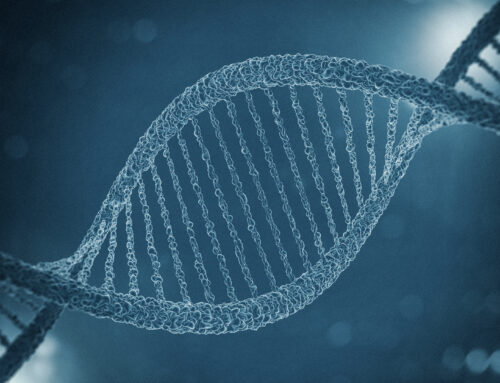By: Sivan Schondorf – October 2, 2015
L’dor vador–“from generation to generation”–the Hebrew phrase heard in prayers and song. As a grandchild of Holocaust survivors, I understood from a young age that a thread connects one Jew to another through our history of shared values, traditions, Torah, endless persecution, and continued survival. Today, we know this thread goes as deep as our DNA.
In 2000, my 49-year old aunt, Linda Ben-Ami, originally diagnosed with stage II breast cancer, received a terminal prognosis. She was the matriarch of our family and was raising two teenage boys. We were derailed.
The tailspin deepened when not only Aunt Linda, but my grandmother, mother, and other family members learned they carried one of the main Ashkenazi BRCA1 genetic mutations-one that almost guarantees aggressive triple negative breast cancer. The BRCA1 mutation also brings with it a high risk of ovarian cancer and several other elevated cancer risks for both men and women.
In the months that followed, my grandmother had a first time breast cancer diagnosis, my mother had a risk-reducing mastectomy with reconstruction and an oophorectomy to remove her ovaries and fallopian tubes– and Aunt Linda died.
It was not a good year.
While we mourned, we were also desperate for answers about our futures. At 19, I was considered too young to test. But it was clear that this was a multigenerational health issue.
Five years later, I learned I also had the BRCA mutation.
From my grandmother, to my mother, to me. L’dor vador .
I tried to think about BRCA solely during my biannual checkups, but my concerns would bubble up when I heard of someone’s passing to cancer, or dated someone who didn’t know my BRCA status. I participated in all the recommended studies, but I realized doctors were performing tests that would catch cancer, not prevent it. I needed to make a change before I was swallowed up by my feelings, my stress, or by cancer.
Just shy of my 28th birthday, I underwent a risk-reducing double mastectomy with immediate reconstructive breast surgery. The decision was daunting, but not difficult. I changed my destiny, lowering my lifetime breast cancer risk from nearly 90 percent to less than 5 percent-lower than the average woman.
People might wonder if I lost my identity or my womanhood. My only answer: I found a new normal. I feel healthy and strong, with fabulous aesthetic results. While I sacrificed the ability to breastfeed, I have the opportunity to see my children grow, to be there for their simchas and for their life challenges.
My choice was not the only option. Some women choose lifetime surveillance or chemoprevention over surgical intervention. Every woman approaches decision-making differently, based on factors such as age, community and family support, personal experience, perception of cancer, or unrelated medical conditions. There is no single right decision, only the right balance of risk for an individual.
Knowing my genetics early in life gave me a window into my future, and like a “choose your own adventure” book, I took a different path. However, my family’s journey continues. I monitor my ovaries and will soon enough need to remove them and deal with the effects and management of early surgical menopause. I have cousins beginning their own journeys, and one day, I will tell my children about BRCA. The next steps will be their own.
Although Aunt Linda died far too young, she saved so many in our family. My family’s commitment to educating others and being proactive with our own health mean she did not die in vain. We picked up the pieces of our family as best we could and shifted our focus to healing and health.
When I look at my sweet daughter, whom we named Maya Linda, I am constantly reminded of the beauty and love my Aunt Linda carried, that came from my grandmother before her, and was passed on to us. L’dor vador .
Sivan Schondorf is the Chicago FORCE Volunteer Coordinator (Facing Our Risk of Cancer Empowered, www.facingourrisk.org) and a long-time friend of the Center for Jewish Genetics.
This article was orginally posted in JUF News, October 2015. Many thanks to JUF News and Sivan for sharing this story.


